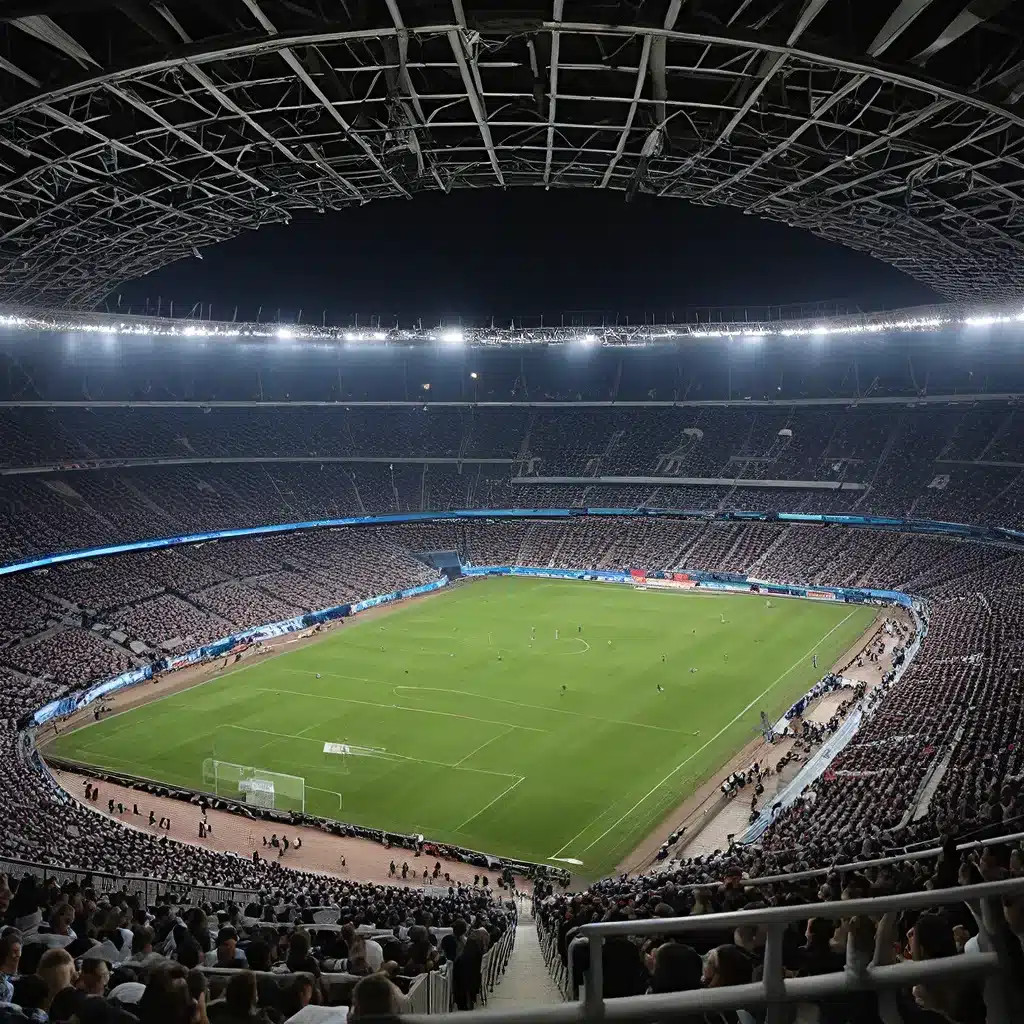
Nestled in the heart of Marseille, France, the Stade Vélodrome stands as a testament to the enduring passion and pride of the city’s devoted football fans. This iconic stadium has witnessed the rise and fall of some of the greatest teams in the history of the sport, and its storied past is woven into the fabric of Marseille’s cultural identity.
The Birth of a Legend
The origins of the Stade Vélodrome can be traced back to the late 19th century, when the city’s burgeoning love for sports and athletic competition led to the construction of a multi-purpose velodrome in 1904. This facility, designed for cycling events, quickly became a hub for various sports, including football, which was rapidly gaining popularity in the region.
As the 20th century dawned, the need for a dedicated football stadium became increasingly apparent. In 1937, the city embarked on an ambitious project to transform the velodrome into a state-of-the-art football arena. The resulting Stade Vélodrome, with its distinctive horseshoe-shaped design and iconic floodlights, opened its doors in 1937, ushering in a new era of footballing excellence in Marseille.
The Roar of the Crowd
The Stade Vélodrome’s inaugural match was a resounding success, with the home team, Olympique de Marseille, emerging victorious. From that moment on, the stadium became the beating heart of the city’s footballing passion, with tens of thousands of devoted fans descending upon its stands to cheer on their beloved team.
The stadium’s reputation for electric atmospheres and unwavering support from the local community quickly spread throughout France and beyond. Olympique de Marseille, the city’s premier football club, made the Stade Vélodrome its permanent home, and the stadium’s iconic status grew in tandem with the team’s successes.
Hosting the World’s Best
The Stade Vélodrome’s significance extended far beyond its role as the home of Olympique de Marseille. Over the years, it has played host to some of the most prestigious events in the world of football, including the 1938 and 1998 FIFA World Cup matches, the 1984 UEFA European Championship, and the 2016 UEFA European Championship.
The stadium’s impressive facilities and unparalleled atmosphere have made it a sought-after venue for international tournaments, with players and fans alike marveling at the electric energy that permeates the stands during high-stakes matches.
The Echoes of Triumph
The Stade Vélodrome has borne witness to countless moments of triumph and glory, both for Olympique de Marseille and the national teams that have graced its hallowed turf. From the roar of the crowd as the home team scores a decisive goal to the collective euphoria that erupts during a championship victory, the stadium’s legacy is etched in the collective memory of its devoted supporters.
One of the most memorable moments in the Stade Vélodrome’s history came in 1993, when Olympique de Marseille secured the UEFA Champions League title, becoming the first French club to achieve this feat. The wild celebrations that followed, with fans spilling onto the pitch to embrace their triumphant heroes, encapsulated the deep-rooted passion and pride that the stadium has come to symbolize.
Renovations and Modernization
Over the years, the Stade Vélodrome has undergone various renovations and modernization efforts to ensure that it remains a world-class football venue. The most significant transformation occurred in the lead-up to the 2016 UEFA European Championship, when the stadium underwent a major overhaul that included the addition of a retractable roof and the expansion of its seating capacity to over 67,000.
These upgrades have not only enhanced the stadium’s aesthetic appeal but have also improved the overall fan experience, with improved amenities, better accessibility, and state-of-the-art technology that allows for immersive viewing experiences.
Preserving the Legacy
As the Stade Vélodrome continues to evolve, the city of Marseille and its devoted fans remain committed to preserving the stadium’s rich heritage and cultural significance. The stadium’s history is celebrated through guided tours, museum exhibits, and community events that reconnect fans with the moments that have defined their beloved home ground.
Furthermore, the stadium’s iconic design and architectural features have become an integral part of Marseille’s identity, with the floodlights and distinctive silhouette serving as a recognizable symbol of the city’s footballing passion. As the Stade Vélodrome ushers in a new era of football excellence, the echoes of its past triumphs will continue to inspire and captivate generations of supporters.
Conclusion
The Stade Vélodrome stands as a testament to the enduring power of football to unite and inspire communities. Its storied history, filled with moments of triumph and heartbreak, has become inextricably woven into the fabric of Marseille’s cultural identity. As the stadium continues to evolve and adapt to the changing demands of the modern game, its legacy as a true icon of French football remains undiminished, a shining beacon of the passion and pride that fuel the beautiful game.

